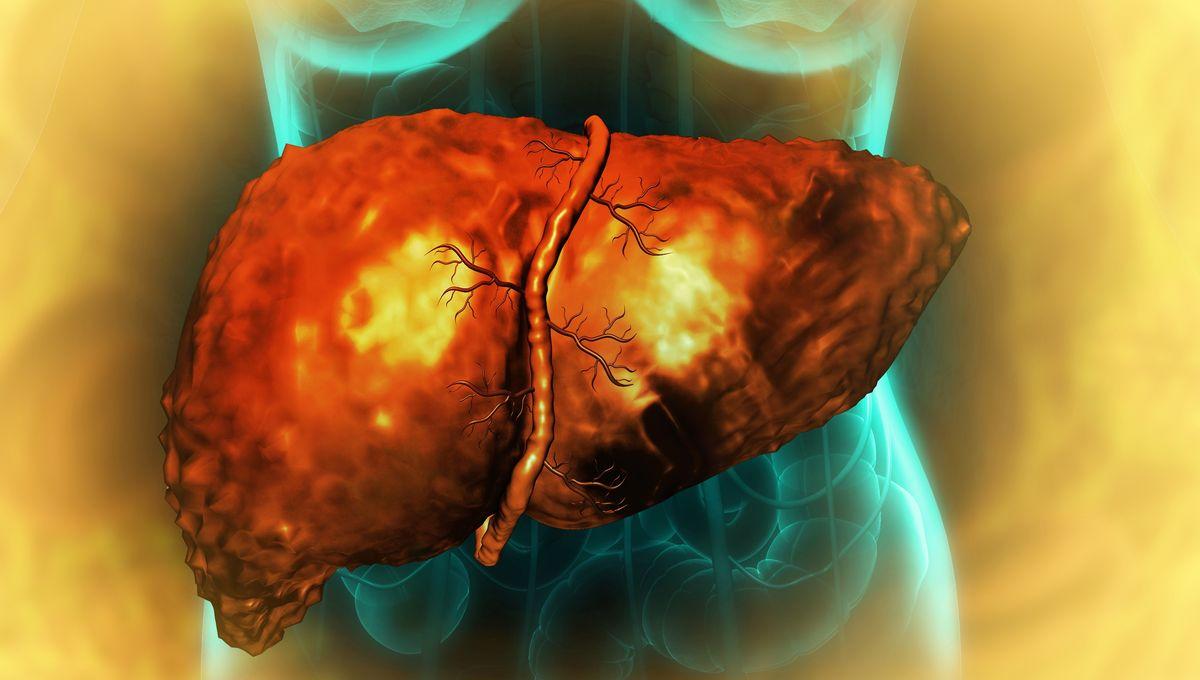-
Feed de notícias
- EXPLORAR
-
Páginas
-
Blogs
-
Fóruns
First Targeted Treatment For Dangerous Liver Disease Could Come From An Unexpected Source

First Targeted Treatment For Dangerous Liver Disease Could Come From An Unexpected Source
Scientists could be on course to develop the first treatment with a chance of controlling and even reversing liver fibrosis, thanks to a discovery from a rather surprising source. Pigments extracted from the henna tree Lawsonia inermis, used for generations for coloring hair and decorating skin, have proven to be a promising drug candidate in experiments with mice.
The rest of this article is behind a paywall. Please sign in or subscribe to access the full content. Liver fibrosis is the buildup of excessive scar tissue in the liver as a result of chronic injury. Fibrosis is one of the later stages of chronic liver disease and typically develops slowly, after years of damage to the liver from things like infection, autoimmune conditions, and alcohol use. If left untreated, liver fibrosis can progress to cirrhosis, which can then give rise to liver cancer or other potentially fatal complications. A 2025 study estimated that 3.3 percent of people worldwide have advanced fibrosis. There are ways of halting fibrosis in its tracks and preventing permanent damage, such as stopping drinking alcohol and treating underlying conditions like viral hepatitis. The authors of a new study, however, wanted to investigate potential drug treatments that could target the actual biological processes in liver cells that lead to scar tissue formation. One promising target is a subset of cells called hepatic stellate cells (HSCs). During liver injury, extra HSCs get activated and overproduce collagen and fibrous tissue, which builds up over time and hardens the liver, disrupting its function. The team, based at Osaka Metropolitan University in Japan, developed a method of screening over 1,800 different chemicals to find those that could act directly on HSCs. One stood out: Lawsone, a component of the henna tree. Henna has been used in a range of cultural and religious practices for thousands of years. Henna paste was used by ancient Egyptians during mummification – the Natural History Museum, London, explains that some mummies have even been found with henna-dyed hair. Body adornment with elaborate henna patterns, an art form known as mehndi, was seen in both ancient Egypt and the Mughal Empire, and continues to be a popular way of celebrating weddings and other special occasions for followers of many religions to this day. Henna paste, derived from the Lawsonia inermis tree, has been used ceremonially and medicinally for millennia. Image credit: © HM Emon via iNaturalist (CC BY 4.0); SyedAliAshraf/Shutterstock.com; modified by IFLScience As well as its ceremonial uses, henna has also been part of traditional medicine practices. The study team discovered that the lawsone extract had the potential to inhibit the activity of HSCs, and in vitro experiments suggested it could have a favorable safety profile with low toxicity. They therefore decided to take it forward to experiments in a mouse model. Mice treated with lawsone exhibited decreased levels of various markers of liver fibrosis, and an increase in a marker of HSC antioxidant function. The authors concluded that lawsone could therefore not only tamp down HSC activation, thereby decreasing the production of fibrous tissue, but could also push HSCs back towards their non-fibrotic state. “We are currently developing a drug delivery system capable of transporting drugs to activated HSCs and ultimately hope to make it available for patients with liver fibrosis,” said corresponding author Tsutomu Matsubara, an Associate Professor in the Department of Anatomy and Regenerative Biology, in a statement. “By controlling fibroblast activity, including HSCs, we could potentially limit or even reverse the effects of fibrosis.” The study is published in the journal Biomedicine & Pharmacotherapy.


